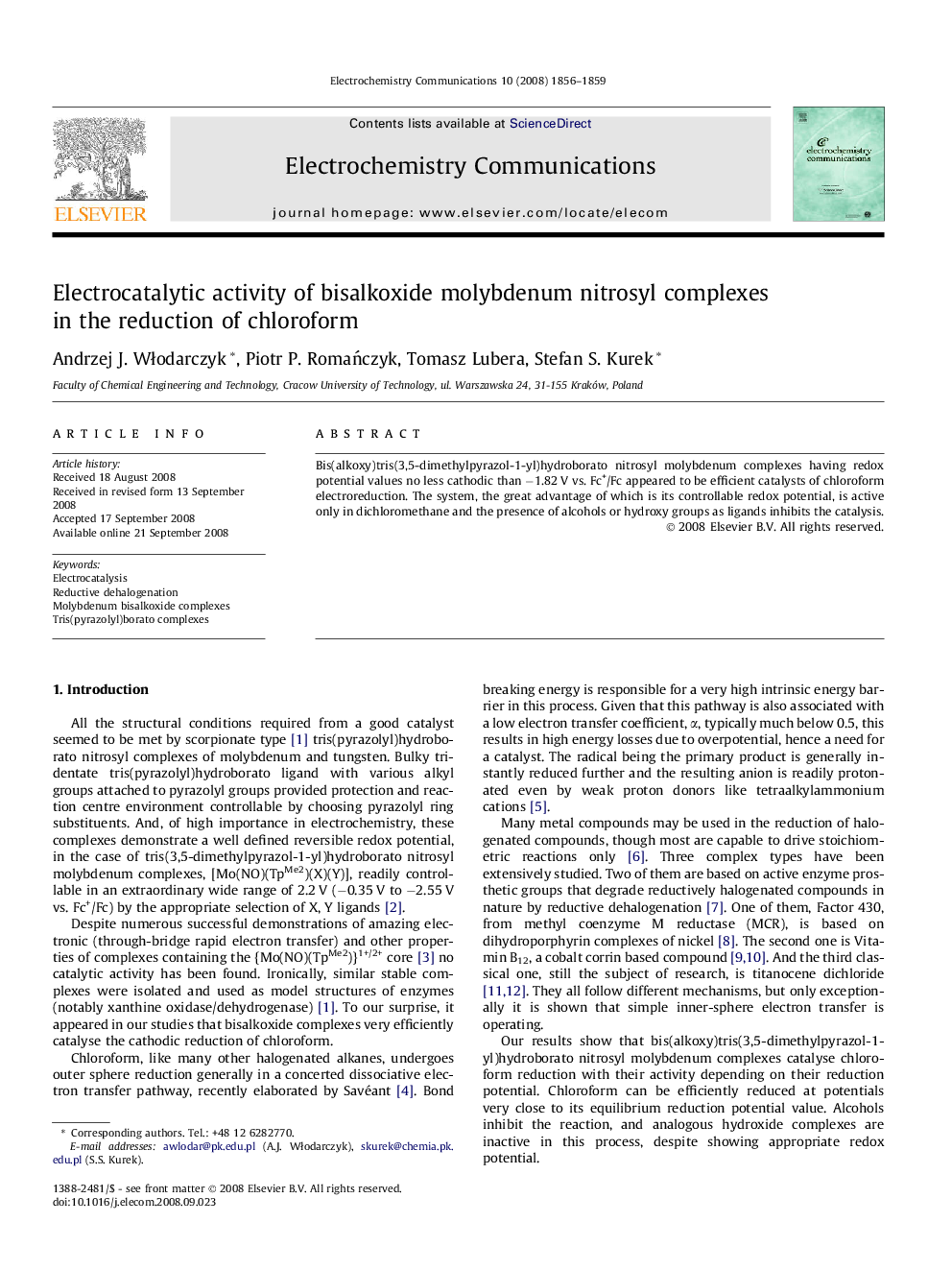| Article ID | Journal | Published Year | Pages | File Type |
|---|---|---|---|---|
| 181713 | Electrochemistry Communications | 2008 | 4 Pages |
Abstract
Bis(alkoxy)tris(3,5-dimethylpyrazol-1-yl)hydroborato nitrosyl molybdenum complexes having redox potential values no less cathodic than −1.82 V vs. Fc+/Fc appeared to be efficient catalysts of chloroform electroreduction. The system, the great advantage of which is its controllable redox potential, is active only in dichloromethane and the presence of alcohols or hydroxy groups as ligands inhibits the catalysis.
Related Topics
Physical Sciences and Engineering
Chemical Engineering
Chemical Engineering (General)
Authors
Andrzej J. Włodarczyk, Piotr P. Romańczyk, Tomasz Lubera, Stefan S. Kurek,
